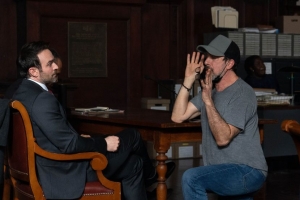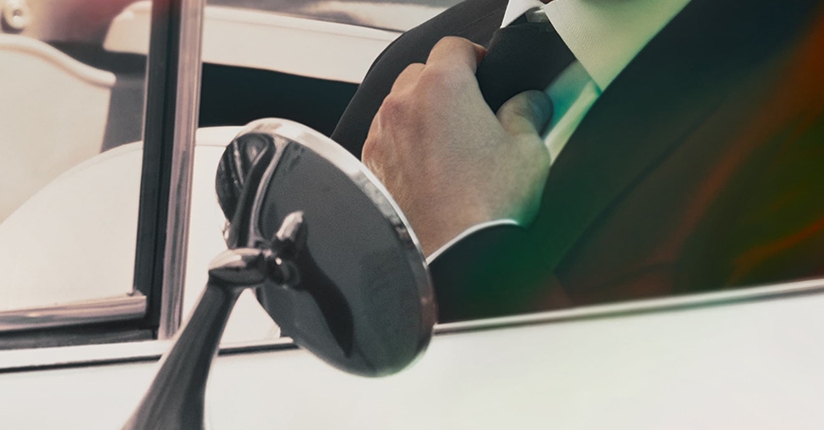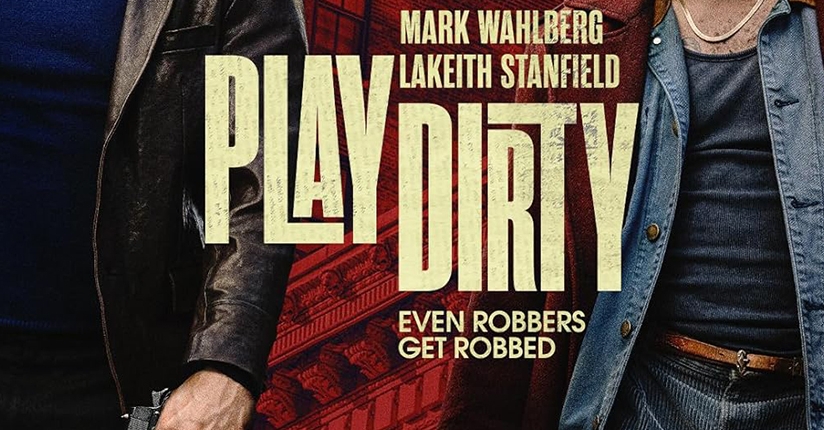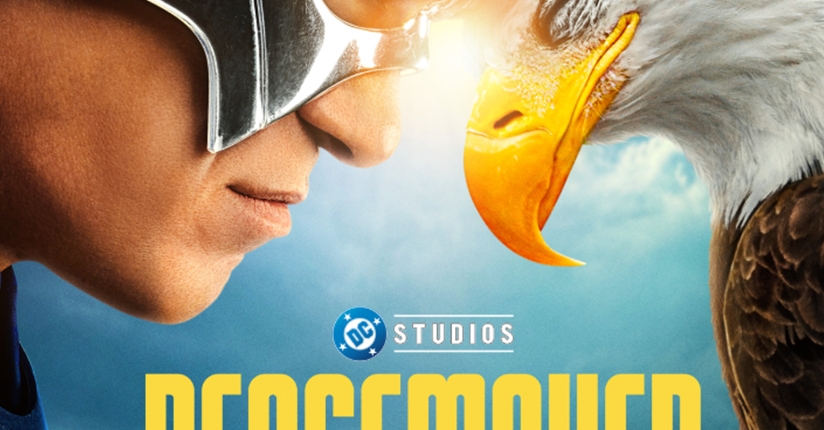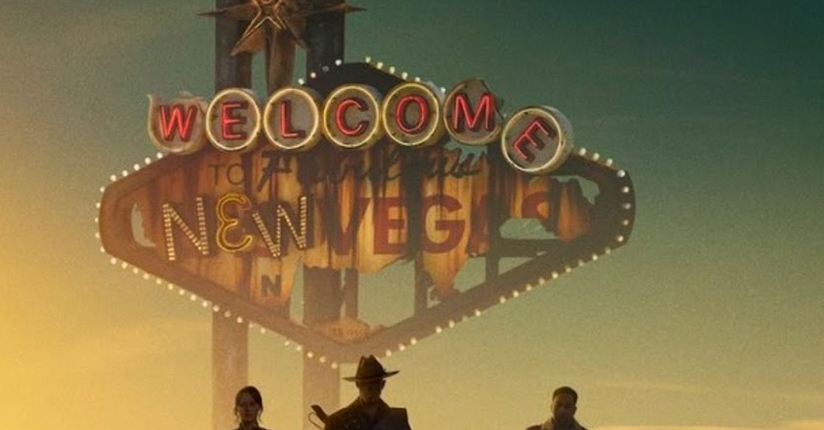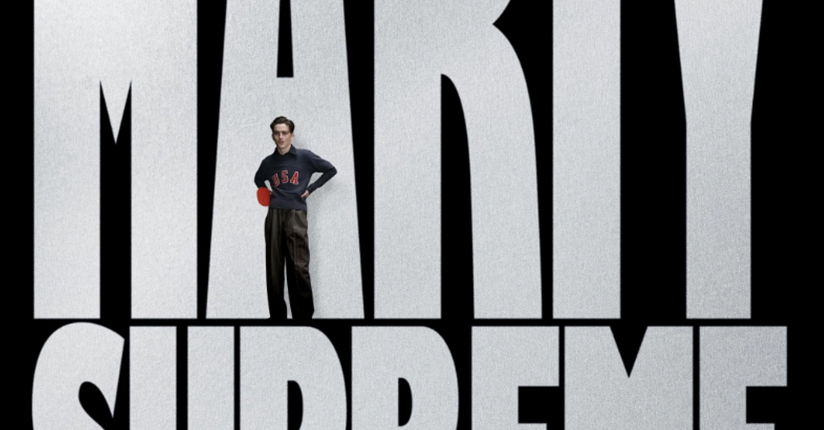Summary
In Marvel Television’s Daredevil: Born Again, Matt Murdock, a blind lawyer with heightened abilities, is fighting for justice through his bustling law firm, while former mob boss Wilson Fisk pursues his own political endeavors as the new Major of New York. When their past identities begin to emerge, both men find themselves on an inevitable collision course.

The showrunner and executive producer is Dario Scardapane, who was writer and executive producer of The Punisher. Matt Murdock is again played by Charlie Cox and Vincent D’Onofrio returns as Daredevil’s longtime nemesis Wilson Fisk aka Kingpin.
To bring the visceral and graphic tone of the action sequences to life in “Daredevil: Born Again,” the filmmakers turned to a powerful VFX team and legendary stunt coordinator Philip Silvera. Charlie Cox reunited with Silvera, as he had served as stunt and fight coordinator on the original series. “The beautiful thing about this show is its rich in its characters, and every time we design one of the stunt and fight sequences, it has to be relative to the characters in the moment and how they would react,” says Silvera. “Once we understand the stakes and the emotions the characters are carrying into a scene, that’s where we begin to design our sequences.”
Charlie Cox has worked with Silvera for many years. “He’s one of the greatest of all time,” says Cox. “I never get bored watching him create these iconic scenes that the fans are going to go crazy about. He never loses sight of how it has to be so much more than just punches and kicks when you’re telling a story through a stunt sequence. Every beat has to be specific to those characters and why they are in physical conflict.” To complete the fight sequences the physical stunt team worked with the VFX team to bring the complex scenes to life.
fxguide spoke to the VFX team, Fahed “Freddy” Alhabib, VFX producer and Gong Myung Lee, the production visual effects supervisor.
fxguide: Congrats on the show, I am sure a second season will be even more impressive.
VFX team: Hi Mike, thanks so much for having us. I’ve been a fan of your show, so it’s truly an honor to contribute.
fxguide: Given the visually dark nature and cinematography of the original series, were you finding yourself balancing letting VFX fall into the blacks? I assume the plate photography was shot quite dark, versus being graded down. For example, the complex fight scenes in Episode 6 with Muse, etc, – which I assume had some digital enhancement and rig removal? Similarly, the rooftop fight in Episode 1?
VFX team: As grounded as Daredevil: Born Again is, the photography wasn’t pushed into extreme darkness on set. Our DP, Hillary Spera, crafted the lighting with intentional atmosphere and shaped depth — a distinct look compared to the original Netflix series. The goal wasn’t to underexpose, but to create rich, dimensional plates that gave us flexibility later. Shot on Alexa 35 cameras with custom-tweaked anamorphic lenses, the footage captured a wide dynamic range, excellent shadow detail, and strong tonal separation — which gave us room to adjust in DI as needed, and provided VFX with greater latitude for integration across varying lighting conditions.
From a VFX standpoint, every element had to match the original photography before DI — ensuring that no matter how far the final image was pushed in the grade, it would blend invisibly. A big part of that meant capturing technical data early: lens grids, flare and bokeh libraries, LiDAR scans, photogrammetry, HDRI captures, clean plates, and element photography. For heavier VFX shots, we layered in CG atmosphere, 2D haze, and light diffusion to help the work sit naturally into the blacks and hold up through the final grade.
On a show like this, success in VFX comes when you can’t tell where the practical ends and the digital begins. That philosophy was critical for Daredevil: Born Again. The VFX mandate was simple but strict: grounded, analog, invisible. Daredevil isn’t a superhero with flashy powers — he bleeds, he suffers — and our visual effects had to support that reality without pulling the audience out. Whether it was digital blood, CG weapons, digidouble enhancements, or environment extensions, everything had to be physically plausible and embedded into the action. Gore was pushed to a 10, but it always had to stay realistic.
We worked closely with our stunt team, led by Action Director and Supervising Stunt Coordinator Philip Silvera, and with our SFX team, led by SFX Coordinator Roy Savoy. As much as possible, we built the foundation practically. Even when SFX elements weren’t in the final take, we referenced them for physical accuracy. All digidouble animation was driven by motion capture from the stunt team, and all environment extensions were grounded in real-world photography and LiDAR scans.
Episode 6 — the fight between Muse and Daredevil, intercut with Fisk and Adam — is a great example. It’s one of my favorite action sequences of the season. The Muse fight was extremely practical at its core, but heavily supplemented with seamless VFX: rig removals, CG weapon takeovers and extensions, blood hits, debris, impact dust, atmosphere additions, and even some full-CG shots — like Daredevil running through the tunnel. Motion blur, lens flares, depth of field, and diffusion were critical tools we used to take the edge off the CG and blend the line between real and digital.
Similarly, the rooftop fight in Episode 1, which was part of a larger “oner” action sequence starting with the crash into Josie’s Bar, was one of our most technically challenging sequences. We used CG digidoubles strategically for multiple camera stitches: from Bullseye (BE) coming up the stairs, to Daredevil’s jump from the shed onto the rooftop, to the rooftop fight itself, which led directly into the close-up practical performances of Bullseye and Daredevil fighting at the rooftop ledge.
We shot across three different locations — the bar, the stairway, and a bluescreen rooftop stage — and stitching those together required a blend of 2.5D projections and 3D techniques, including full CG hallway and stairwell builds driven by mocap and key frame animation. On the rooftop set, we carefully matched our CG extensions to the practical lighting on stage and added additional CG rooftop lights to justify in-camera lens flares. The final tilt down to the street involved replacing the entire building facade with CG and using a 2.5D projection of Foggy’s plate to complete the move.
fxguide: Can you discuss the environment work in and around the exteriors of Hell’s Kitchen, please? How much was set extensions and how much is there just sign removal and similar Digital Matte Painting (DMP)?
VFX team: All the Hell’s Kitchen rooftop environments in Episode 1 and Matt’s apartment rooftop in Episode 3 were full CG set extensions. We shot those scenes on stage, using a practical rooftop build against chroma blue backings.
For these builds, we scouted real rooftops in Hell’s Kitchen and Williamsburg with our creatives, including our Production Designer and DP. Once we identified the desired locations, we captured tiled photography, panoramas, HDRI at different times of day, and LiDAR scans of hero buildings to feature in the foreground and midground. When it came to layout, we took some liberties to dress the scenes for camera while staying true to the character of New York — adding signature skylights, water towers, antennas, and other rooftop details. Rise, Folks, and Ghost VFX all did a fantastic job enriching the environment builds, even adding dimensional interiors behind windows and people to keep the world feeling alive.
For the broader NYC environments shot practically, it was a close collaboration with our Art Department. Where we couldn’t dress practically, VFX stepped in to remove signage, graffiti, or other undesired elements. When Muse’s murals were part of the storytelling, the smaller installations were practical builds, while the larger, skyline-dominating pieces were created digitally.
We also had a handful of drone overhead shots. In Episode 1, for example, we added VFX fog and atmosphere to the skyline to match the sequence’s tone and climate. For the blackout scenes in Episode 9, we took a hybrid approach: capturing daytime and nighttime passes for each drone shot in the same location so we could composite the action of lights shutting off — and later turning back on — in 2.5D comp.
fxguide: Was the complex combat choreography done in camera or was there much digi-double work? It has been said that the way that Matt Murdock fights in this show is very different from that of Netflix’s Daredevil. Can you comment?
VFX team: The goal for all combat choreography on Daredevil: Born Again was to capture as much as possible in-camera. Wherever something couldn’t be achieved practically — whether for logistics, safety, scheduling, or editorial changes — VFX stepped in to support.
The choreography was fully stuntviz’d in camera by our Stunt Team. This allowed us to map out what could be accomplished practically, what would require rig or pad removals, and where digital takeovers or separate bluescreen elements would be needed in post.
Most of the fights you see are fully practical at their core, with VFX used to enhance and extend — adding CG weapons, blood hits, wounds, or environment interactions. We worked closely with SFX to ground the impacts as much as possible: SFX created practical breakaway effects for bone breaks under clothing, which we then enhanced digitally when needed, and blood squibs and paks were used practically, with VFX sometimes augmenting or extending the effects and cleaning up visible rigs.
Whenever digidouble work was needed, we shot motion capture specifically for the action — from simple standing, walks, and runs to intricate baton combat — to ground everything in real character movement.
There were a few sequences where digi-doubles played a bigger role. In Episode 1, during Daredevil’s rooftop run leading into the “oner” sequence, we used a fair amount of digidouble work to help stitch complex action together. In Episode 2, during Hector’s train fight, we used a digidouble for the man getting hit by the train. In Episode 6, for the Muse versus Daredevil fight, there’s a moment where Daredevil sprints down the tunnel to punch Muse — that was a digidouble takeover. And in Episode 7, during the fight in Heather’s office, we used digi-double proxies to enhance the blood interaction and costume fixes during the close-quarters fight.
As for how Matt Murdock’s fighting style differs in Born Again compared to the Netflix series — I can’t speak to any specific remarks, but there’s definitely an intentional creative arc this season. Early in the story, Matt is suppressing the Daredevil side of himself, trying to maintain control and protect the people around him. As the events escalate, and especially by Episode 6, you see a shift — the power, violence, and emotional weight behind the fighting all start to intensify alongside the character’s internal struggle. The level of gore, destruction, and sheer force amplifies with it.
And of course, having Philip Silvera back to choreograph the action — someone who helped define the fight language of the original series — brought continuity to the DNA of the character, even as the tone and emotional drive evolved.
FXGUIDE: The show is presented in scope format (2.39:1) — but I assume it was shot 16:9, allowing for reframing and additional tracking information?
VFX team: This was a fully anamorphic show, shot Open Gate on the Alexa 35 and framed for 2.39 extraction. With a 2:1 lens squeeze, we allowed for roughly a 6% safe area — utilizing 93.75% of the sensor’s full height — to enable minor stabilization and repositioning in post. In most cases, we were committed to what we captured in camera.
While the majority of the show was photographed this way, we used a different setup for our “grande sensory” moments — switching to a three-camera rig to create a distinct visual language around Daredevil’s heightened senses. These sequences were still shot Open Gate on the Alexa 35, but used a central spherical zoom lens flanked by two spherical primes.
The creative idea was that when Daredevil began to sense something, we would dolly in while simultaneously zooming out — creating a sense of heightened perception. Directors Justin Benson and Aaron Moorhead also wanted to explore shifting aspect ratios to represent how Matt’s sensory awareness expanded and contracted. Shooting spherical while still framing for 2.39 gave us more vertical headroom and flexibility in post.
At the widest focal length, we stitched in the flanking cameras to visually expand his perception — showing that he’s absorbing the world around him. Once he locked onto a specific sound, we would “unwrap” back to the central zoom and continue a slow zoom into the subject. Simultaneously, the aspect ratio would subtly widen vertically; and as his focus narrowed, it would compress back in — a transition completed in VFX.
The result was both cinematic and grounded — subtle, tactile feeling, and designed to play as though it were captured entirely in camera.
FXGUIDE: The show is presented in scope format (2.39:1) — but I assume it was shot 16:9, allowing for reframing and additional tracking information?
VFX team: This was a fully anamorphic show, shot Open Gate on the Alexa 35 and framed for 2.39 extraction. With a 2:1 lens squeeze, we allowed for roughly a 6% safe area — utilizing 93.75% of the sensor’s full height — to enable minor stabilization and repositioning in post. In most cases, we were committed to what we captured in camera.
While the majority of the show was photographed this way, we used a different setup for our “grande sensory” moments — switching to a three-camera rig to create a distinct visual language around Daredevil’s heightened senses. These sequences were still shot Open Gate on the Alexa 35, but used a central spherical zoom lens flanked by two spherical primes.
The creative idea was that when Daredevil began to sense something, we would dolly in while simultaneously zooming out — creating a sense of heightened perception. Directors Justin Benson and Aaron Moorhead also wanted to explore shifting aspect ratios to represent how Matt’s sensory awareness expanded and contracted. Shooting spherical while still framing for 2.39 gave us more vertical headroom and flexibility in post.
At the widest focal length, we stitched in the flanking cameras to visually expand his perception — showing that he’s absorbing the world around him. Once he locked onto a specific sound, we would “unwrap” back to the central zoom and continue a slow zoom into the subject. Simultaneously, the aspect ratio would subtly widen vertically; and as his focus narrowed, it would compress back in — a transition completed in VFX.
The result was both cinematic and grounded — subtle, tactile feeling, and designed to play as though it were captured entirely in camera.
fxguide: When did you first get involved with the show? Was Season 2 always in your planning and if so did that change any of your VFX planning or approaches?
VFX team: I started on the show in November 2022, right at the beginning of pre-production. Originally, it was planned as one long season, but partway through the process, it was decided to proceed with nine episodes for Season 1.
During post, we got the news that there would be a separate Season 2, and it was exciting to know we’d get the chance to keep building on what we had started.
Now, we’re already midway through shooting Season 2, and it’s been incredibly exciting to push the world even further — evolving the storytelling, expanding the scope, and building on the visual language we established in Season 1.
fxguide: What was the hardest aspect of the series and how did you address it?
VFX team: As much as I love the grounded nature of the show, there were definitely moments I found myself wishing we had a seven-headed dragon — not for the reasons you might think, but because it would have made it easier to justify gathering more data and element plates. On a grounded show, it’s sometimes harder to get the time and resources VFX needs, because the work is supposed to be invisible — but the technical demands are still just as real.
Looking back, one of the biggest challenges was simply the production conditions we were working in — dealing with COVID, industry strikes, and the production disruptions that came with them. It impacted schedules, crews, and overall planning.
TV moves much faster than film, and the action scenes moved even faster — often leaving very little time for traditional VFX planning. When that happens — when you can’t get enough scanning, lighting references, or coverage — integration becomes trickier and you’re relying on less data, or parsing through too many layers married in camera. That always makes the work harder in post.
Despite all the production challenges, we stayed disciplined about capturing as much as we could — every LiDAR scan, cyberscan, clean plate, lighting reference, and practical element we gathered during Season 1 made a huge difference. It gave us the foundation we needed to integrate VFX properly and maintain the level of quality we were aiming for.
The biggest thing we learned is that when VFX is involved early — collaborating closely with Stunts, SFX, Art Department, and Camera — that’s when we do our best work. Season 1 taught us a lot, and heading into Season 2, that collaboration and shorthand between departments has gotten even stronger.
Already, you can feel the difference — the collaboration is tighter, the planning is sharper, and we’re excited to take the VFX even further in Season 2.
fxguide: Can you confirm the VFX houses?
VFX team: There were a lot of VFX houses involved across Daredevil: Born Again, and it was a true team effort at every level.
The Third Floor – Sophia Yu, Alyssa Knittel
RISE Visual Effects Studios – Stuart Bullen, Alex Twigg, Roy Hoes, Lara Lom
Folks VFX – Phil Prates, Tanya Haddad
Ghost VFX – Jessica Norman, Maria Giron, Julie Jepsen
Phosphene – Aaron Raff, Vivian Connolly, Steven Weigle, Matt Griffin
Powerhouse VFX – Ed Mendez, Dan Bornstein, Adrienne McNeary
Soho VFX – Berj Bannayan, Keith Sellers, Kelly McCarthy
Anibrain – Ajay Patel, Gagan Nigam, Dnyandeep Gautam Pundkar, Neeraj Singh, Sumit Mukherjee, Pradeepkumar Vadisherla, Divesh Vijay Tupat, Jesh Krishna Murthy, Saurabh Dalmiya, Marc de Sousa
BASE FX – Jared Sandrew, Shad Davis, Sun Xiaodan
SDFX Studios – Alex Guri, Mark Simone
Cantina Creative – Aaron Eaton, Donna Cullen
Scanable – Travis Reinke, Pasquale Greco
Lola VFX – Edson Williams, Jack Dorst, Will Anderson
Dark Red Studios – Olney Atwell
In-house VFX Team – Mat Ellin
It was an incredible collaboration across so many talented artists and teams, and the final result really reflects the strength, creativity, and dedication everyone brought to the table.
fxguide: Thanks so much
With Daredevil: Born Again, Marvel has not only redefined the visual and emotional language of the character, but also elevated the standards for grounded, gritty character-driven VFX on television. The seamless blend of in-camera stunts, atmospheric cinematography, and surgically integrated digital effects creates a world that feels as harsh and unforgiving as Hell’s Kitchen itself. Every punch, every shadow, every rooftop leap carries weight — not just physically, but narratively. As Season 2 unfolds, we expect the VFX team to double down on what made Season 1 so impactful: invisible craft in service of visceral storytelling.

